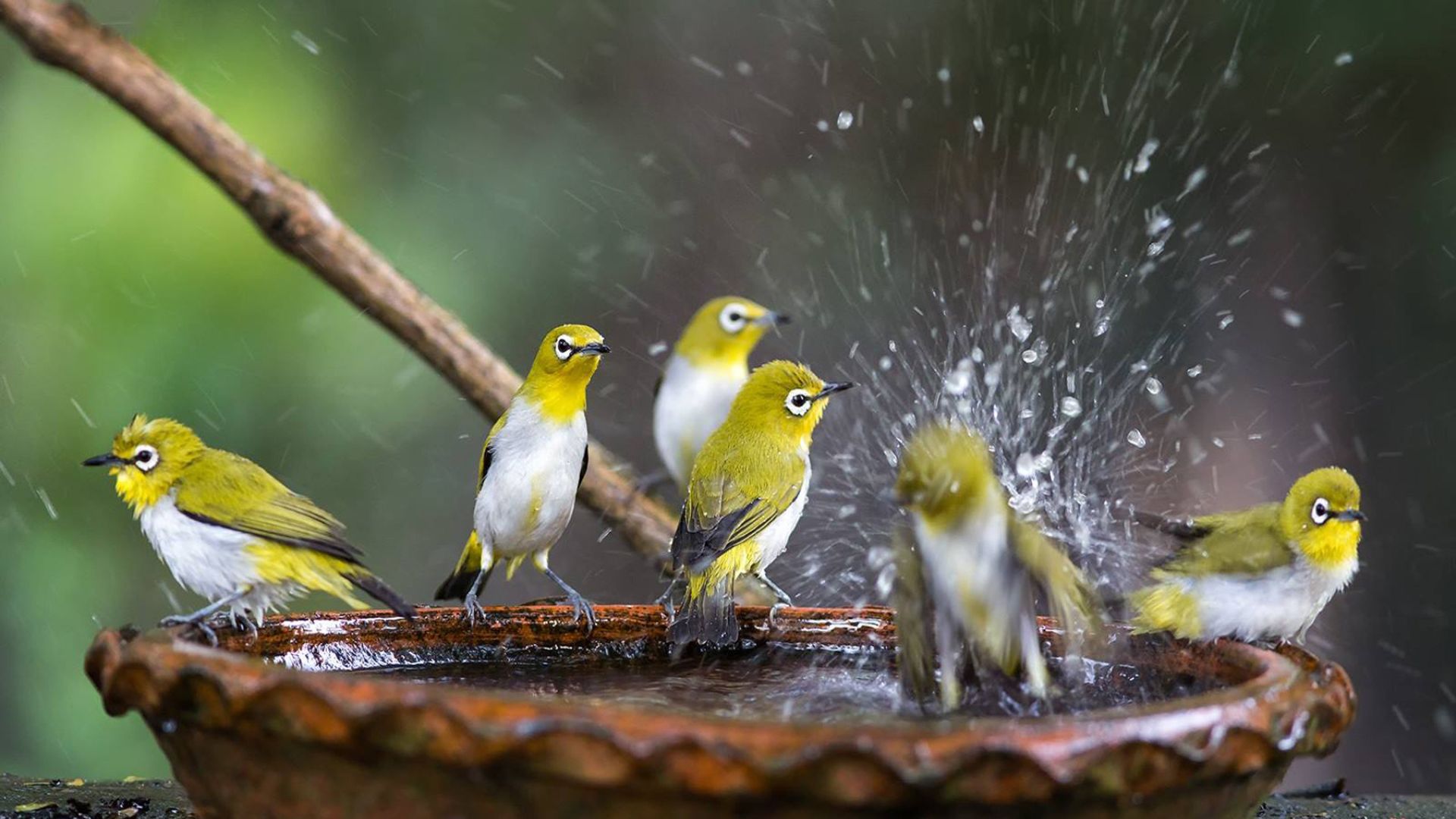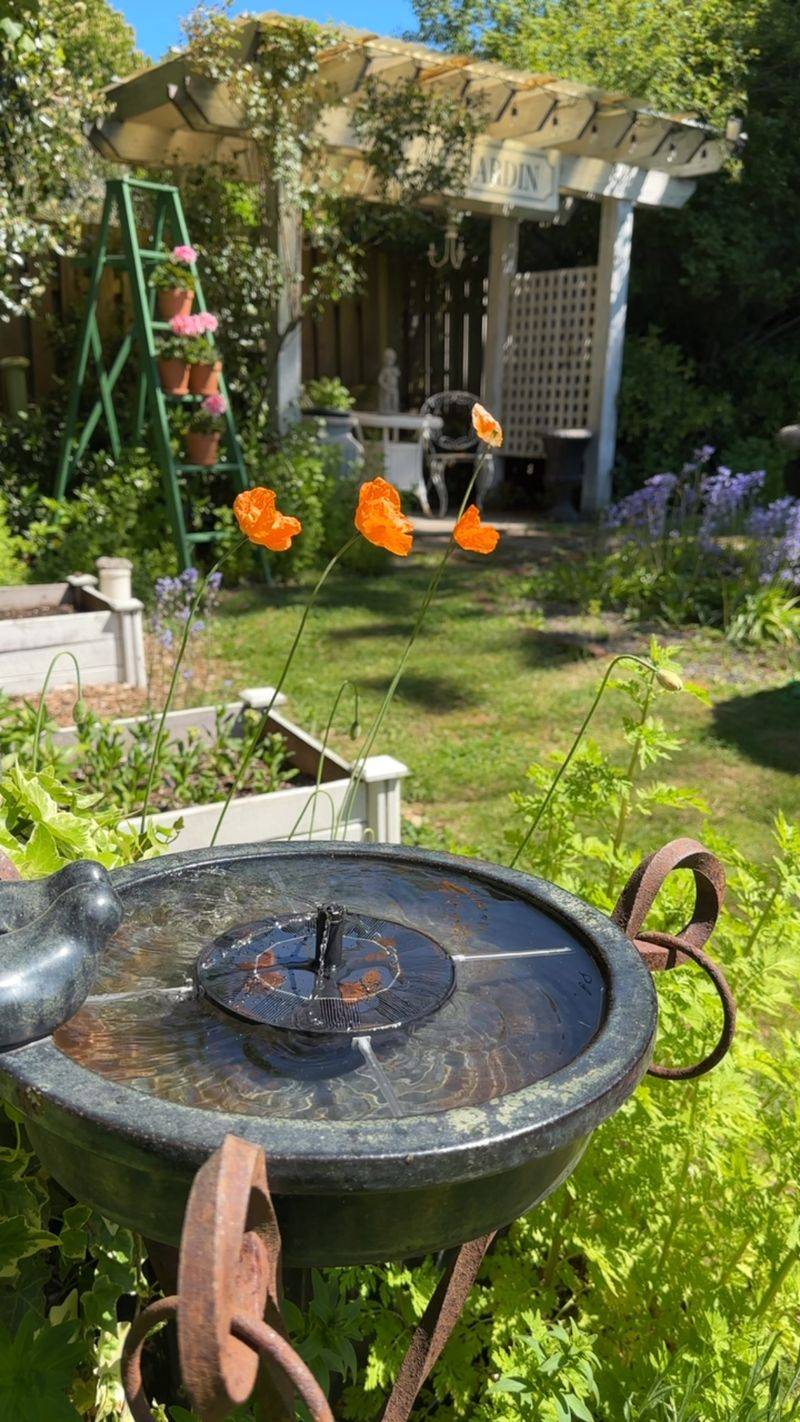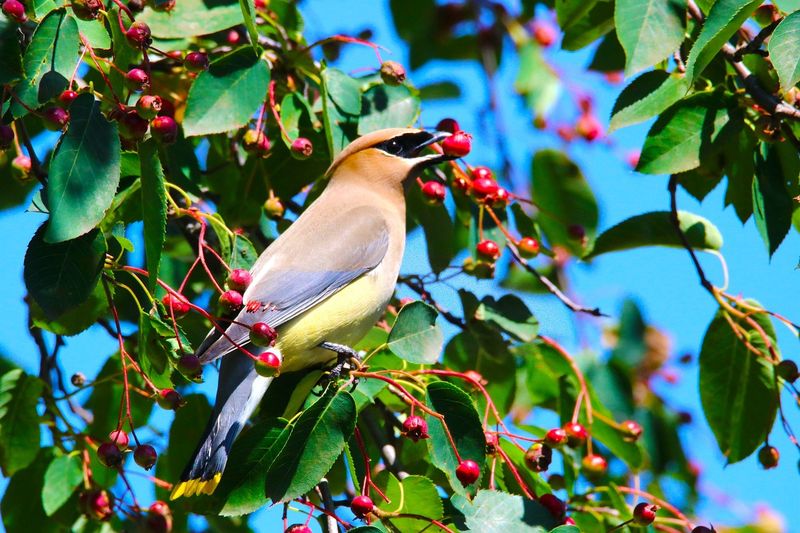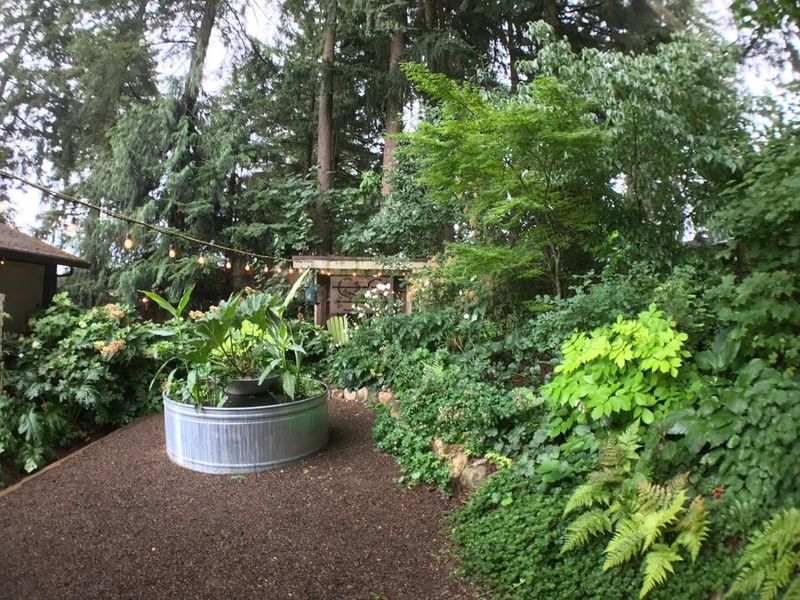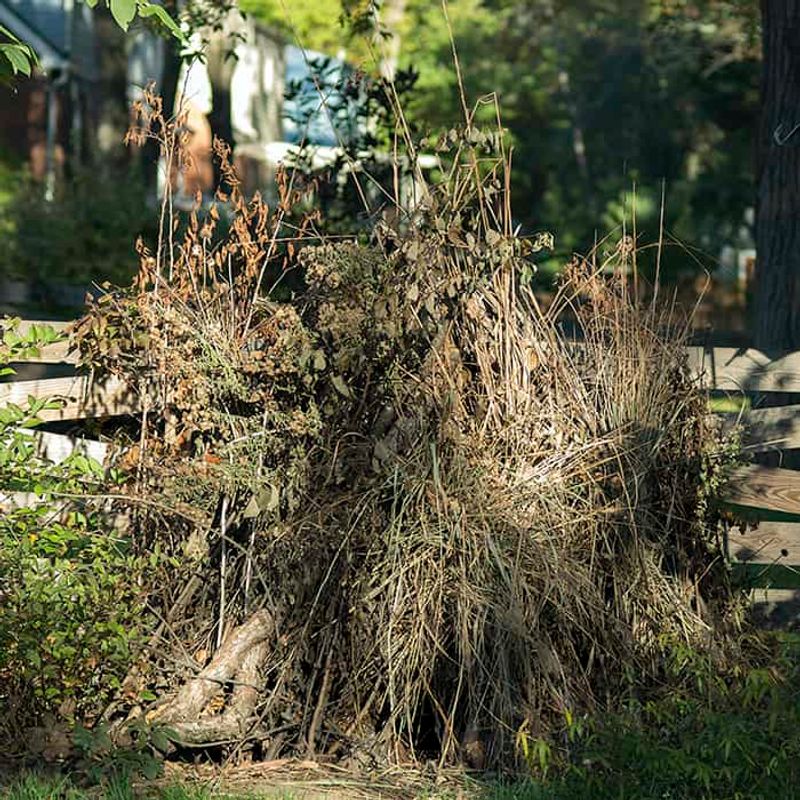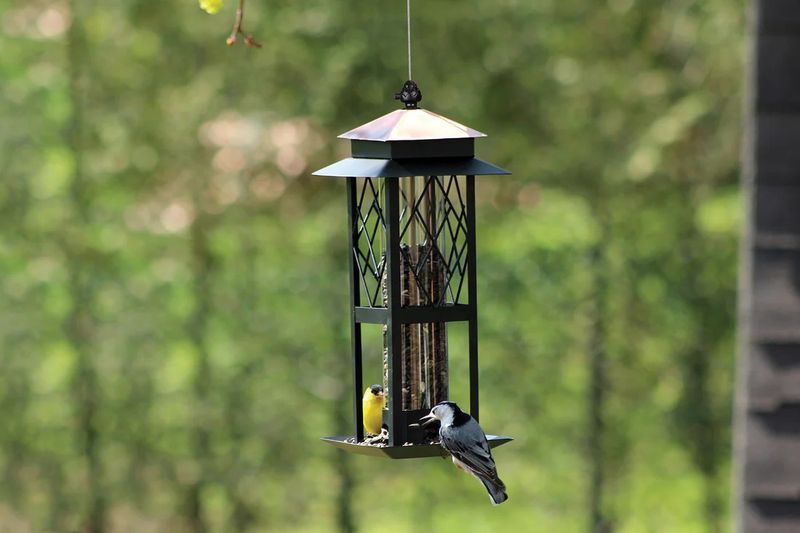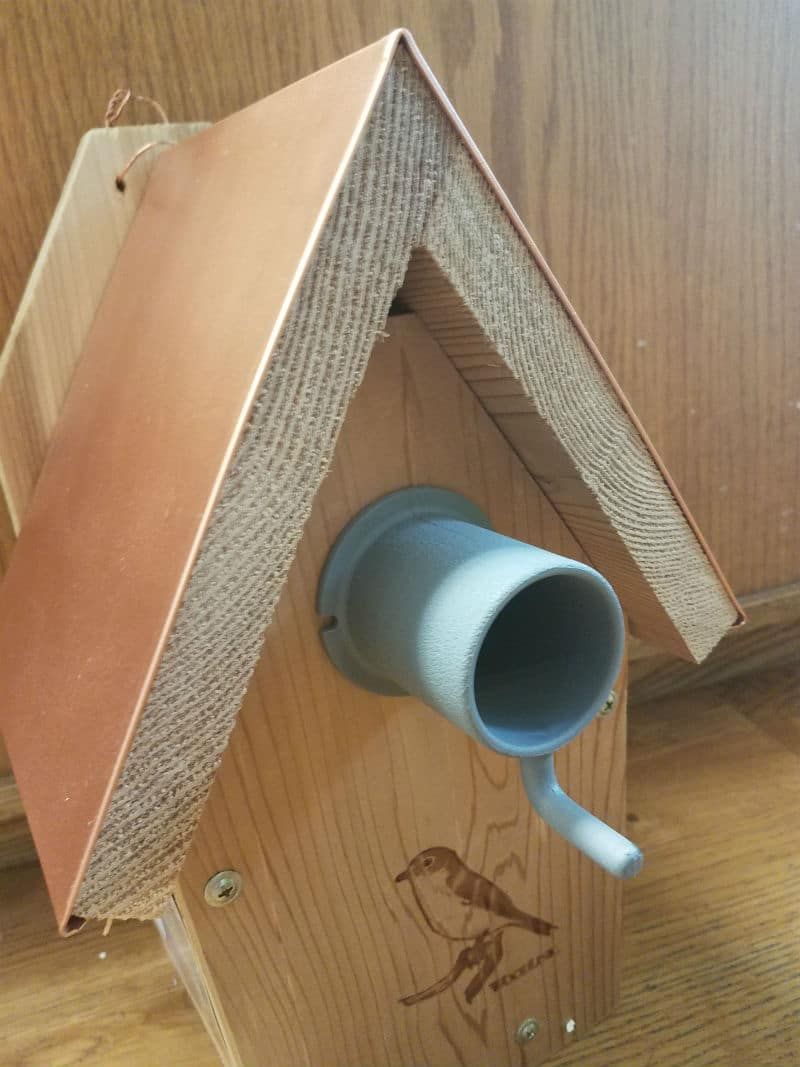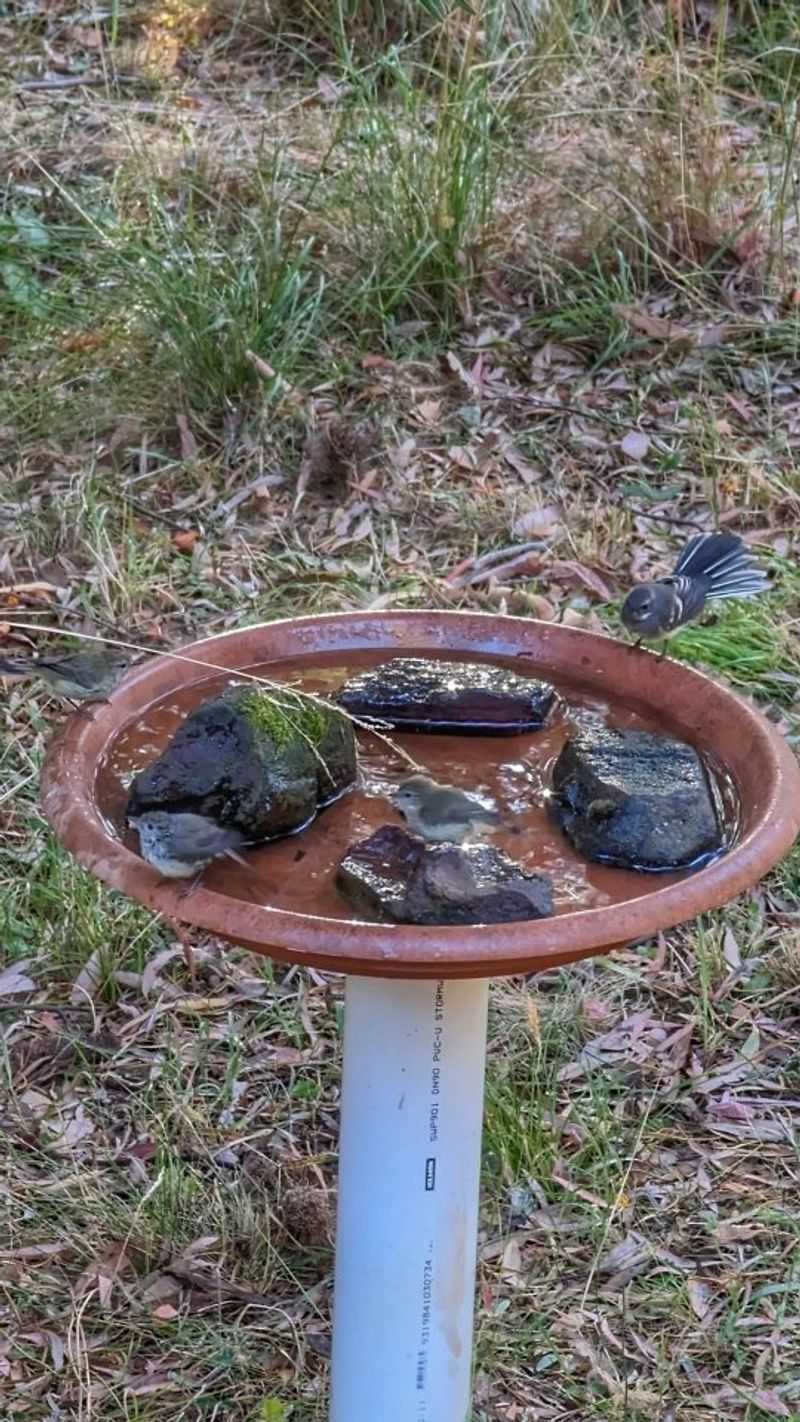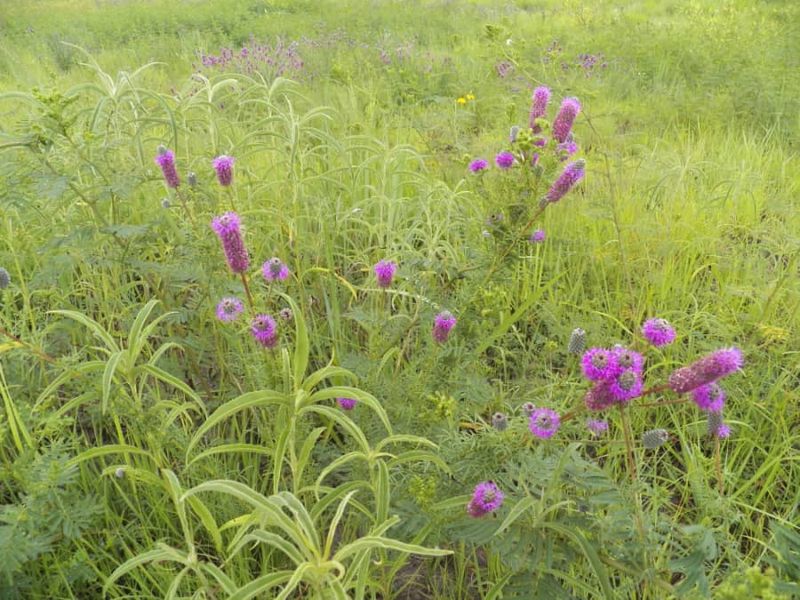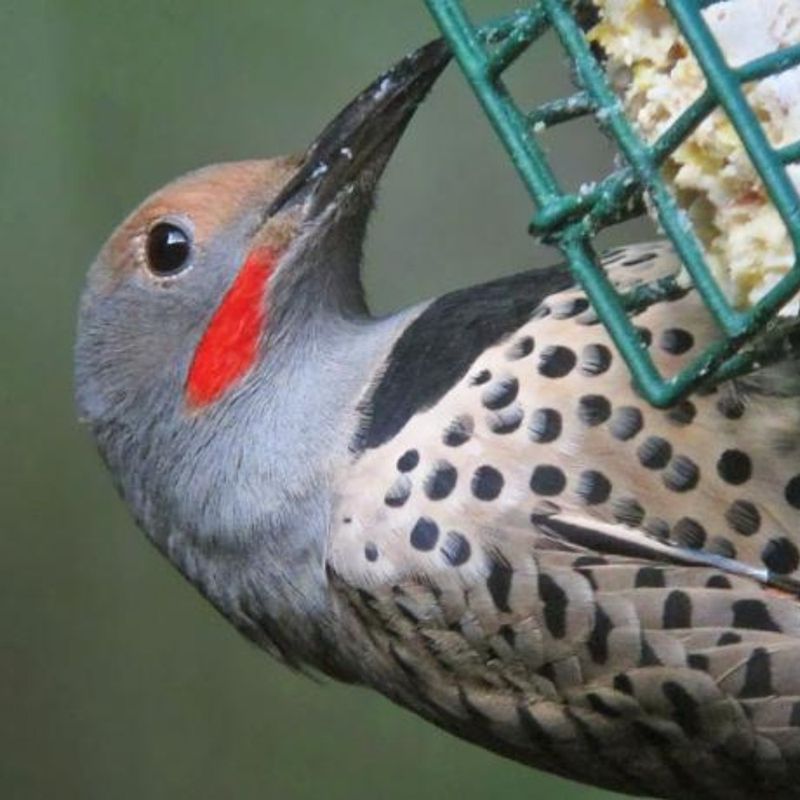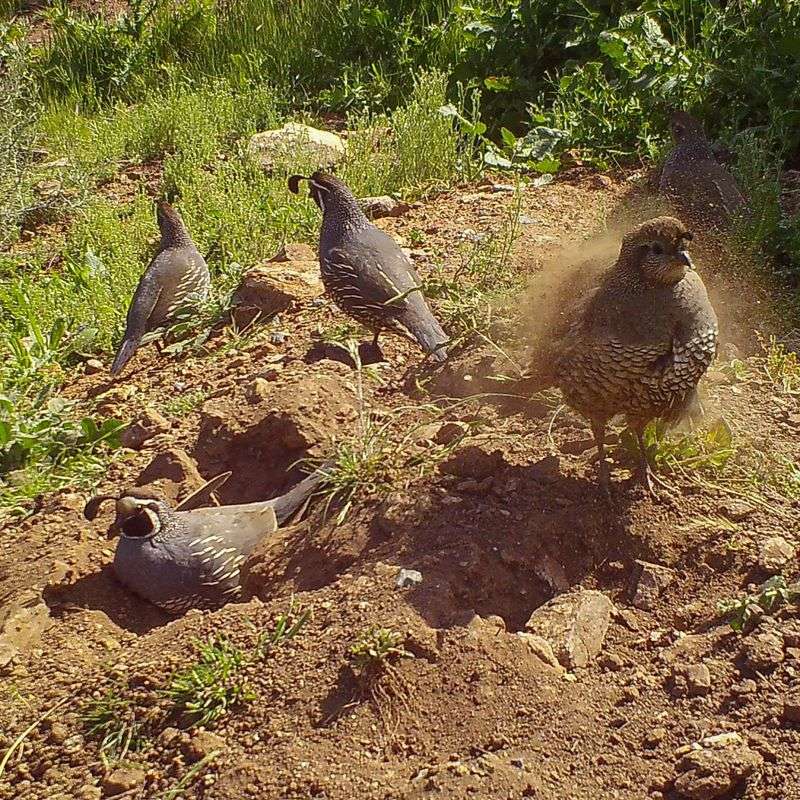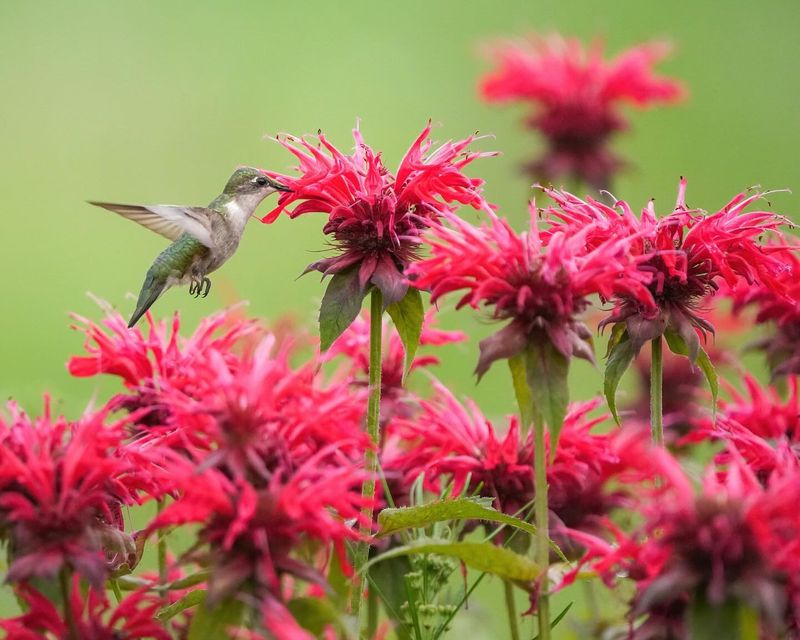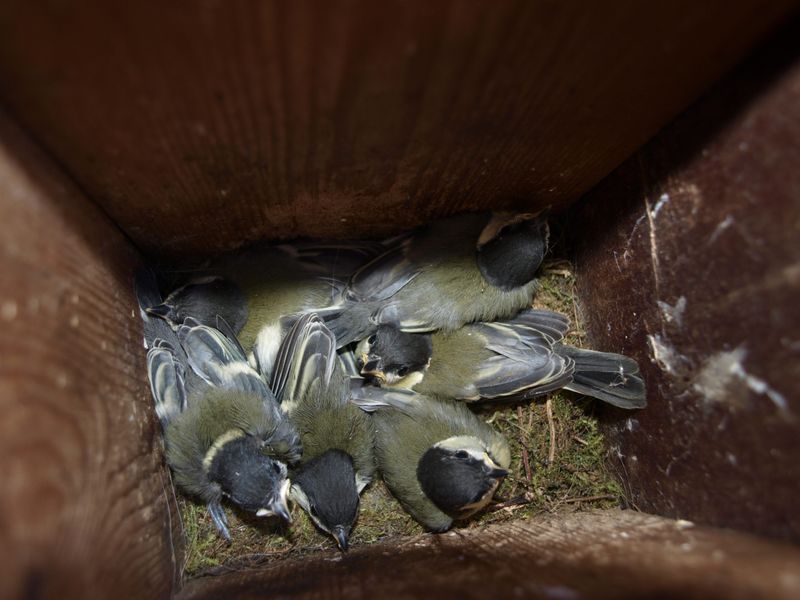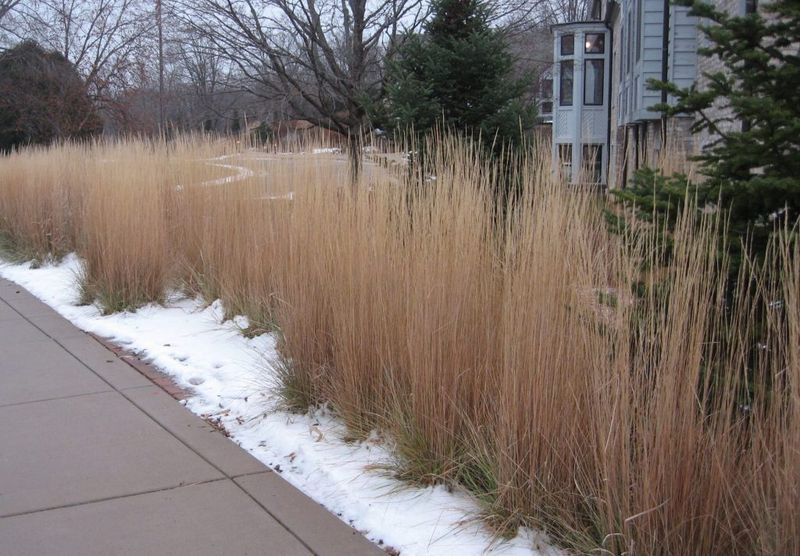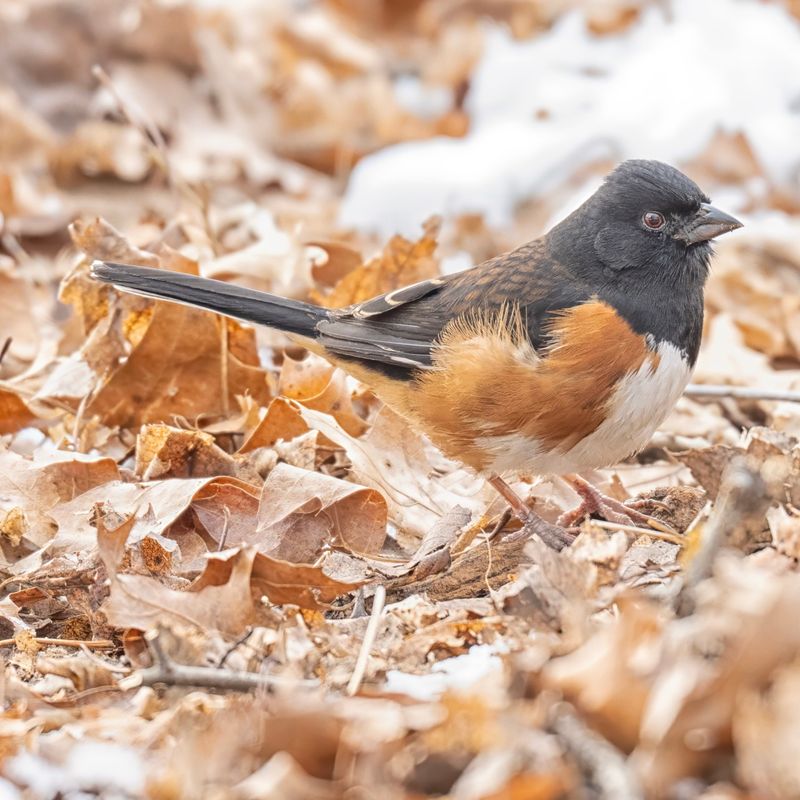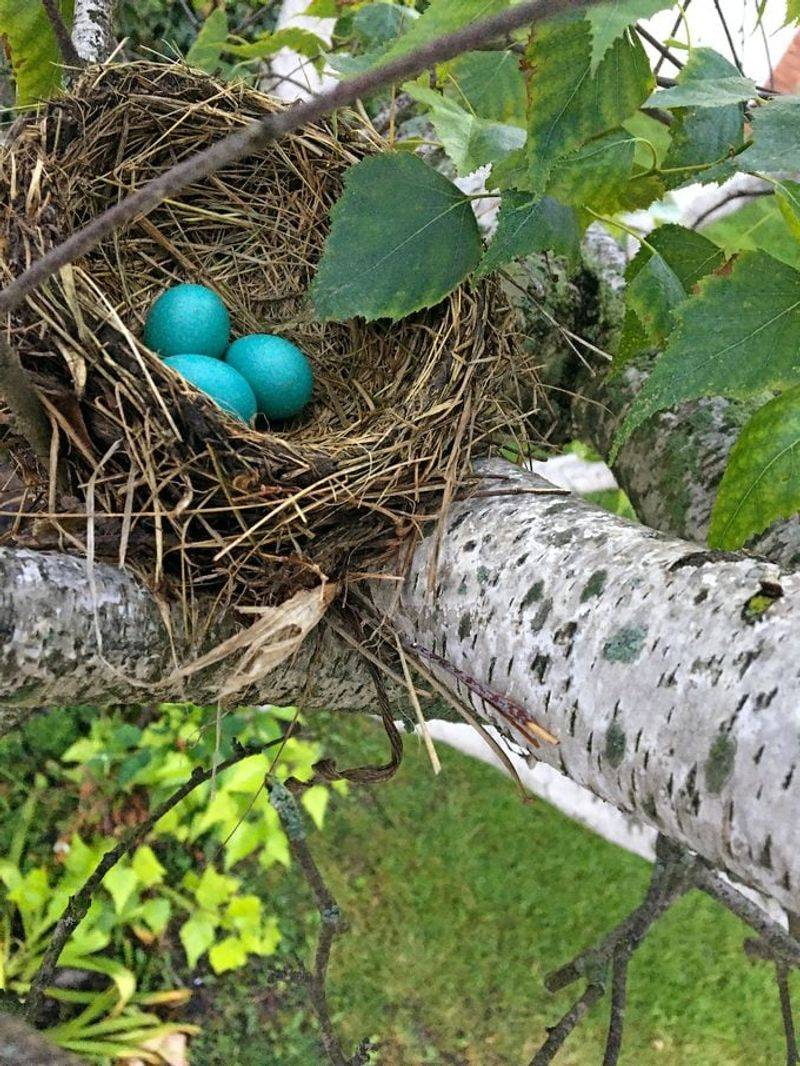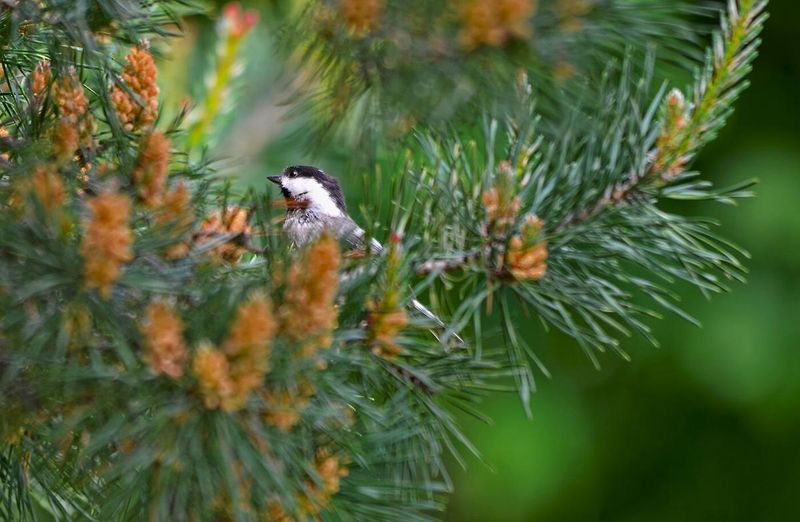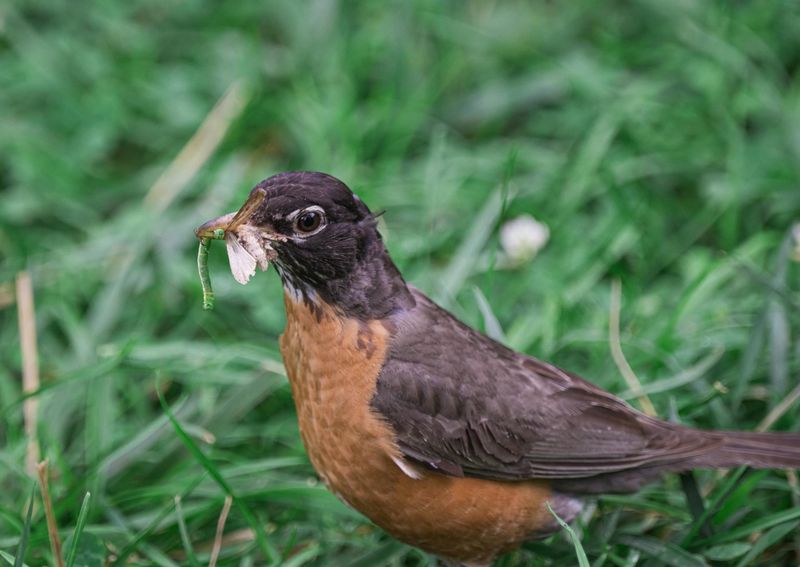There’s nothing like sipping your morning coffee while listening to birds singing just outside your window. But I quickly learned that if you want birds to stick around, you have to offer more than a random birdbath or feeder.
They’re looking for a space that feels safe and inviting—just like we are. Over time, I started adding little things: a shallow water dish here, a patch of native plants there, and suddenly my yard was full of wings and chirps.
It doesn’t take a huge budget or tons of space, just a bit of thoughtfulness. Whether you’ve got a big backyard or just a balcony, creating a bird-friendly spot is easier than you think. And once they know it’s a good place to land, they’ll keep coming back—and probably bring friends.
1. Bird Baths With Moving Water
The gentle sound of trickling water acts like a magnet for birds from surprising distances. Adding a small solar fountain or dripper to your bird bath creates that irresistible sound that birds simply can’t ignore. Shallow basins with textured bottoms give birds secure footing while they drink and bathe.
I noticed the number of species in my yard doubled within days of adding a simple pebble-bottom bath with a solar bubbler.
During winter months, a heated bird bath becomes even more valuable as natural water sources freeze. Birds remember reliable water sources and will return repeatedly, even bringing friends along to share their discovery.
2. Native Berry-Producing Shrubs
Berry bushes serve as natural bird buffets throughout different seasons. When I planted serviceberry and elderberry shrubs along my fence line, they quickly became the most visited spots in my yard.
Birds have co-evolved with native plants for thousands of years, making these shrubs perfectly matched to their nutritional needs. The berries appear just when certain species need them most for migration or feeding young.
Beyond food, these dense shrubs provide excellent protective cover from predators and harsh weather. Many birds will nest directly in these shrubs, keeping their young close to a reliable food source while staying hidden from danger.
3. Layered Native Plantings
Creating different height levels in your garden mimics natural forest edges where bird diversity thrives. Starting with ground covers, then adding mid-height perennials, shrubs, and finally trees creates multiple habitats in one space. Each layer serves a different purpose in a bird’s daily routine.
Ground-dwelling birds forage in leaf litter, warblers hunt insects in the middle layers, and larger birds perch in the canopy to survey their surroundings. My backyard transformation began with just three native plant layers, and within a season, I spotted birds I’d never seen before.
The layered approach provides more ecological niches than a flat lawn ever could, supporting different feeding styles and nesting preferences.
4. Brush Piles From Yard Trimmings
What looks like yard waste to us appears as luxury housing to many birds. Stacking fallen branches, twigs, and garden trimmings in a loose pile creates instant shelter that birds absolutely love.
Small birds like wrens and sparrows dart in and out of these natural fortresses, finding protection from both predators and weather extremes. The spaces between branches trap warmth during winter nights while providing cooling shade in summer.
Placing brush piles near feeding areas gives birds a quick escape route when they feel threatened. After creating a simple pile near my feeder station, I watched chickadees grab seeds and retreat to the safety of the brush to eat their treasures undisturbed.
5. Sunflower Seed Feeders
Black oil sunflower seeds attract the widest variety of songbirds with their high fat content and easy-to-crack shells. Unlike mixed seed blends that often get scattered and wasted, sunflower seeds appeal to chickadees, cardinals, finches, and dozens more species.
Tube feeders with metal ports prevent squirrel damage while keeping seeds dry during rainy weather. Watching birds crack open seeds is fascinating – each species has developed its own technique, from the brute force approach of cardinals to the precise hammering of nuthatches.
Consistency matters more than quantity when feeding birds. My neighbors often comment on how many birds visit my yard, yet I use less seed by offering high-quality options in reliable locations rather than cheap fillers that birds mostly ignore.
6. Nesting Boxes With Predator Guards
Different bird species require specific nesting box dimensions – a detail many first-time bird hosts overlook. Bluebirds need a 1.5-inch entrance hole, while chickadees prefer 1.25 inches, making properly sized boxes crucial for attracting target species.
Mounting height and direction matter tremendously. My eastern bluebird boxes face east to catch morning sun while avoiding afternoon heat, and they’re placed at exactly 5 feet high – low enough to monitor but high enough to deter predators.
Metal predator guards around the entrance hole and beneath mounting poles have doubled my successful nesting rate. Nothing drives birds away faster than a predator raid, so these simple protections ensure birds return year after year to raise their families.
7. Shallow Ground Baths For Ground-Feeders
Ground-feeding birds like thrushes and towhees often avoid elevated baths but readily use shallow water sources at ground level. A simple terra cotta plant saucer nestled among plants creates the perfect bathing spot for these shy species.
Surrounding ground baths with dense plantings gives nervous birds the security they need to approach. After adding a simple ground bath near my native ferns, I spotted robins and thrushes that had never used my hanging baths.
The natural appearance of these baths blends seamlessly into gardens while serving as artistic focal points. Refreshing the water daily prevents mosquito breeding while ensuring birds have clean drinking water – something that brought a family of catbirds to my yard for the first time last summer.
8. Unmowed Meadow Patches
Letting even a small section of lawn grow into a meadow creates a seed buffet for finches, sparrows, and other seed-eating birds. Native grasses and wildflowers produce nutritious seeds that persist through winter when other food sources disappear.
The taller growth provides crucial cover for ground-nesting species like meadowlarks and field sparrows. Many birds collect the fluffy seed heads and plant fibers for nest building in spring.
Converting just a 10×10 foot corner of my lawn to unmowed meadow brought in goldfinches that now visit daily to feed on coneflower and black-eyed Susan seeds. The constant bird activity has actually reduced pest insects in my vegetable garden nearby – an unexpected bonus from this simple change.
9. Suet Feeders For Woodpeckers
Suet’s high-calorie fat content provides essential energy that helps birds survive cold weather. Woodpeckers, nuthatches, and chickadees particularly love this rich food source, especially when mixed with nuts and berries.
Cage-style suet feeders prevent larger birds and squirrels from dominating the resource. Mounting these feeders on tree trunks rather than poles better mimics how woodpeckers naturally feed, making them more comfortable and likely to visit regularly.
My yard went from zero woodpeckers to three species after adding just one suet feeder to a maple tree. The distinctive drumming and calls of these magnificent birds now fill my yard year-round, controlling insect populations in my trees while providing endless entertainment.
10. Dust Bathing Spots
Many birds control parasites through dust bathing, a behavior as important as water bathing yet often overlooked by garden designers. Creating a simple patch of fine, dry soil in a sunny spot provides birds with a natural spa treatment they can’t resist.
Sparrows, thrushes, and many ground birds will create small depressions in loose soil, then vigorously fluff and shake dust through their feathers. This process helps control mites and other pests while maintaining healthy feathers.
Adding a sprinkle of wood ash or fine sand improves the dust’s effectiveness. The first time I witnessed a group of sparrows taking turns dust bathing in my garden’s designated spot, their obvious joy and social interaction showed me how essential this simple feature is to their wellbeing.
11. Hummingbird-Friendly Nectar Plants
Trumpet-shaped flowers in bright reds and oranges signal to hummingbirds that sweet nectar awaits inside. Native plants like cardinal flower, bee balm, and trumpet honeysuckle have co-evolved with hummingbirds, making them perfect matches for these flying jewels.
Staggering bloom times ensures continuous nectar sources from spring through fall migration. My garden’s cardinal flowers bloom just as the bee balm fades, creating an unbroken food supply that keeps hummingbirds returning day after day.
Clustering nectar plants in highly visible locations lets you enjoy the spectacular aerial displays as hummingbirds feed and defend their territory. Last summer, a ruby-throated hummingbird visited my porch salvia so regularly that he would hover at my window if I was late putting out fresh nectar in the nearby feeder.
12. Roosting Boxes For Winter Shelter
Unlike nesting boxes, roosting boxes feature interior perches and smaller entrance holes positioned low to trap body heat. These specialized shelters help small birds survive frigid winter nights when temperatures can drop dangerously low.
Chickadees, nuthatches, and wrens will crowd together inside these boxes, sharing body warmth to survive even the coldest nights. Facing roosting boxes south or southeast maximizes solar gain during short winter days.
Installing my first roosting box revealed a whole new dimension of bird behavior I’d never witnessed before. On winter evenings, I now watch tiny birds queue up to enter the box at dusk, sometimes with 6-8 chickadees sharing the same small space – nature’s perfect example of cooperation in challenging conditions.
13. Seed-Producing Native Grasses
Ornamental grasses aren’t just visually stunning – they’re bird feeding stations that last through winter. Switchgrass, little bluestem, and prairie dropseed produce nutritious seeds that persist on stalks even under snow, providing critical winter food.
The sturdy stems stand up to winter weather, making seeds accessible when other food sources are buried. Watching juncos and sparrows balance on swaying grass stems to reach seeds during snowstorms shows how valuable these plants are during the harshest season.
Unlike feeders that need regular refilling, native grasses provide maintenance-free bird feeding. My neighbor commented that birds disappeared from her yard during a heavy snow while mine remained full of activity – all because my native grasses stood tall above the snow, offering both food and shelter.
14. Leaf Litter Zones For Ground-Feeders
Fallen leaves create nature’s perfect foraging habitat for thrushes, towhees, and other ground-feeding birds. Leaving undisturbed leaf areas under trees and shrubs maintains a thriving ecosystem of insects and small invertebrates that birds eagerly hunt.
The distinctive scratching sound of birds like towhees flipping leaves to find hidden treasures becomes a regular backyard soundtrack. This natural behavior can’t happen on raked, bare soil or mulched areas where the leaf layer has been removed.
Creating designated leaf litter zones satisfies both aesthetic preferences and wildlife needs. The eastern towhee that now visits my oak leaf zone almost daily wasn’t present in my yard until I stopped raking that area, showing how quickly birds respond to this simple habitat improvement.
15. Mud Puddle Access For Nest Builders
Robins, swallows, and phoebes need access to mud for constructing their nests. Creating a simple mud puddle area that stays consistently damp provides these birds with an essential building material that can be surprisingly hard to find in manicured landscapes.
A shallow depression lined with plastic and filled with soil in a corner of the garden creates the perfect mud source. Maintaining just enough moisture to keep the soil workable without creating standing water takes minimal effort but yields maximum results.
After creating a dedicated mud puddle spot near my garden shed, barn swallows built their first nest under my porch eave. Watching them gather small beakfuls of mud dozens of times a day showed me how something so simple could make such a difference in supporting these aerial insect-eaters.
16. Conifer Trees For Year-Round Shelter
Evergreen trees provide crucial winter protection when deciduous trees stand bare. The dense branches of spruce, pine, and cedar create microhabitats where temperatures can be significantly warmer than surrounding areas during freezing weather.
Many birds roost in conifers overnight, taking advantage of the wind protection and retained heat. Chickadees, kinglets, and juncos particularly depend on these sheltered spaces during winter storms and cold snaps. Beyond winter, conifers offer nesting sites for numerous species from spring through fall.
A single white pine I planted ten years ago now hosts more birds than any other tree in my yard, proving that sometimes the most valuable bird feature is simply the right tree in the right place.
17. Pesticide-Free Garden Policy
Chemical-free gardening isn’t just one feature – it’s the foundation that makes all other bird-friendly elements work. Birds depend on insects for feeding their young, with a single chickadee family needing thousands of caterpillars to raise one brood.
Gardens treated with pesticides may look perfect but function as ecological deserts where birds can’t find the protein-rich insects they need. Converting to organic practices creates a functioning ecosystem where birds help control the very pests you’re trying to eliminate.
The transformation happens surprisingly quickly. Within one season of stopping all chemical use, my garden had noticeably more birds actively hunting insects among my plants. Now they provide better pest control than any product I could buy, while entertaining me with their constant activity.

